#Christianity and Literature
Explore tagged Tumblr posts
Text
Tumblr: Isn't it funny how Japanese light novels have such improbably long titles? Isn't it weird?
English literature for most of the 17th–19th Centuries:

[Image description – A photograph of a book published in 1810, whose title reads, in full: "A Reviving Cordial for a Sin-Sick Despairing Soul, in the Time of Temptation, Being an Account of the Miraculous Preservation of the Author’s Bodily Life From Many Imminent Dangers; and of the Way in Which the Spirit of God Effected the Deliverance Of His Soul From the State of Nature to the State of Grace. To Which Is Subjoined, the Only Refuge of a Troubled Soul, in the Time of Tribulation and Affliction; or, The Mystery of the Apple-Tree, Explained and Laid Open, in Two Discourses From Cant. ii. 3", by the Rev. James Barry, Minister of the Gospel.]
#media#literature#titles#religion mention#christianity mention#don't even talk to me unless your book's title contains at least seven commas two semicolons and a full stop
6K notes
·
View notes
Text
"And Cain says, “When you split me and my brother in the womb, you did not divide us evenly. He got kindness, and I got longing. He got complacence, and I got ambition. I want to kill him sometimes. I think sometimes he wants to die.”
- Nathaniel Orion, "Hevel"
#literature#poem#poetry#christianity#cain and abel#kindness#longing#ambition#kill#death#quotes#catholiscism
4K notes
·
View notes
Text
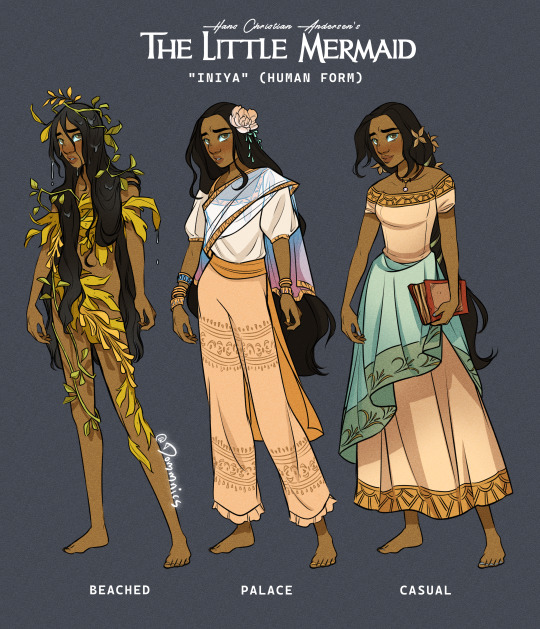
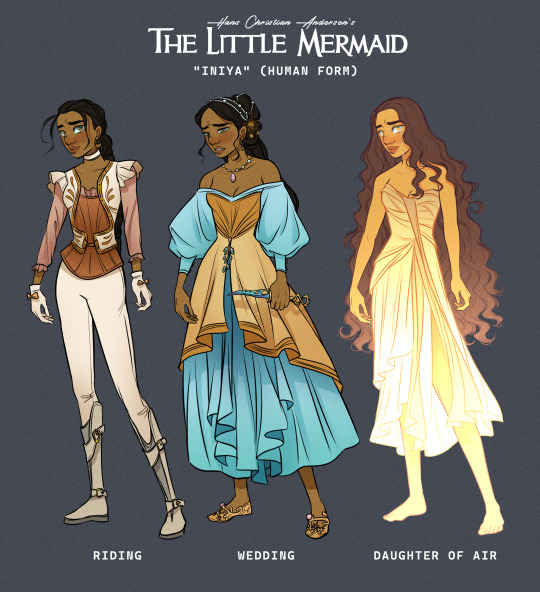
FAIRY TALE ART SERIES | Hans Christian Andersen's 'The Little Mermaid' | PART II
Here's the human form of Iniya, my take on Hans Christian Andersen's little mermaid character.
--
Check out more of my work on other platforms!
My Instagram -- My Twitter
#the little mermaid#hans christian andersen#fairy tale#fairy tales#fairy tale art#artwork#drawing#character design#little mermaid#mermaid art#mermaid#mermaids#merfolk#mermaid artwork#folktale#fairytale#lit#literature#art#illustration#fantasy#fairytale art#mermay#mermay 2024#mermay challenge#mermay day 6
2K notes
·
View notes
Text
Shakespeare: So, in Macbeth, the forest doesn't actually move, it's just an army holding branches
C.S. Lewis & J.R.R. Tolkien: And we took that personally
#shakespeare#funny#macbeth#literature#narnia#peter pevensie#susan pevensie#prince caspian#dawn treader#ben barnes#lord of the rings#ents#aragorn#legolas#fandoms#bilbo baggins#hobbit#orlando bloom#lion witch wardrobe#christian#books#movies#series#book rec
2K notes
·
View notes
Text
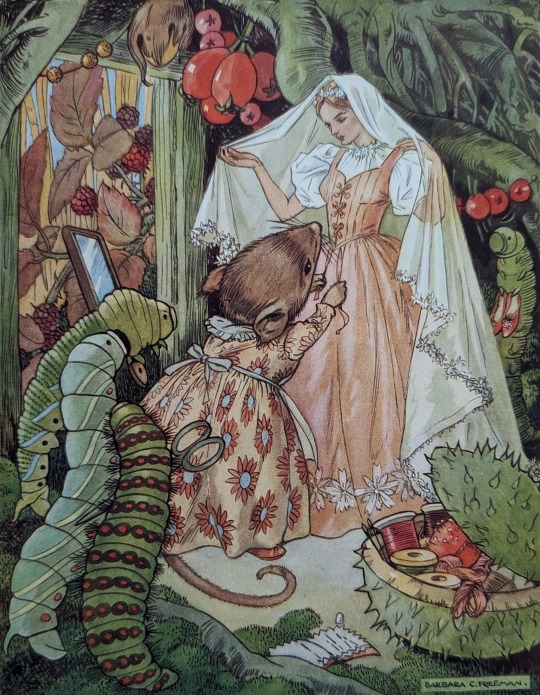
Thumbkin and Other Stories
Text Version by W. K. Holmes
Artist : Barbara C. Freeman (1906-1999)
Blackie & Son Limited
London and Glascow
#barbara c. freeman#children's literature#children's illustration#fairy tale#children's books#vintage illustration#fairy story#children's book#fairy tales#old illustration#hans christian andersen#andersen#thumbkin#thumbelina#thumbeline#poucette#poucelina
3K notes
·
View notes
Text
Writing Notes: Exploring your Setting

(Excerpted from the Young Novelist Workbook) ⚜ Basics: Setting
PART 1: Settings That Create Moods
Mood - the feeling of your novel; its emotional quality.
You can also think of the mood as how you want someone to feel while reading your novel.
Examples: playful, serious, mysterious, tense, warm, dangerous, joyous
The setting of a novel - where and when the story takes place. As you know, most novels have more than one setting.
Usually, the author decides to have one large setting.
Example: Los Angeles in 1995
and then many smaller settings
Examples: The laundromat where the characters hang out on the weekends, or the classroom where they get in a fight
Settings do more than serve as a backdrop to the action in your novel. They can also create or enhance the mood of your novel.
Example
If you wanted to create a creepy mood for a scene in your novel, you could start with something like:
"A dead tree stood alone in a dark field. Its branches creaked in a cold wind, and in the distance, something howled.”
These images remind us of dark, disturbing things, and show the reader that the scene of the novel is “creepy” without having to tell them directly.
Describing the Setting: A Sample Exercise
Describe the settings that would help create each of the moods listed below.
Try to write 2 or 3 sentences for each mood.
Include specific details about the sights, sounds, sensations (and maybe even smells) of the settings you choose:
Creepy, Joyous, Suspenseful/tense
Now make up 2-3 of your own moods and describe a setting that would go along with each one.
The last step is to apply your new skills to your upcoming novel.
Think of a scene from each section of your novel.
Then, write or list details to describe a setting that will help create the right mood for each scene.
Example: You might set your climax on the edge of a crumbling cliff at sunset in the middle of a thunderstorm.
A setting from your set-up:
A setting from your inciting incident:
A setting from your rising action:
A setting from your climax:
A setting from your falling action:
A setting from your resolution:
Now you have settings to enhance the different moods that will be in your novel.
PART 2: Settings That Reinforce Characters
Another advanced writing trick is to show things about your characters just by putting them in specific settings.
Examples: If you were writing about a mysterious person, you might place them in a dark mansion on a hill outside of town; if you were writing about a musician, you might place them in a messy room filled with instruments, speakers, and microphones.
Sample Exercise
For each of the following characters, try to come up with a setting that will reflect or reinforce what you imagine about them.
As you write, try to be as detailed as possible.
Don’t forget colors, sounds, and even smells.
Focus on where the character is.
The shy new kid in town:
A secret scientist superhero:
A character from your novel:
Another character from your novel:
Source ⚜ Writing Notes & References ⚜ On Setting
#writing notes#setting#fiction#writeblr#dark academia#on writing#writing reference#spilled ink#literature#writers on tumblr#writing prompt#poetry#poets on tumblr#writing exercise#template#writing inspiration#writing inspo#creative writing#writing ideas#writing advice#johan christian dahl#rainbow#nature#art#landscape#romanticism#oil on canvas#writing resources
625 notes
·
View notes
Text
i don't have the words to articulate it at this moment but there's something about the way that people have specific expectations for "authenticity" and will dismiss anything that falls outside them as a mangled, anglicised version of the thing when actually that is the older and more traditional form of something, it just doesn't match their expectations. obviously in my personal experiences i'm mostly talking about medieval literature here especially medieval irish literature
sometimes this is as simple as spelling – i've had people argue that the name "finn" is anglicised and it should always be "fionn" to be Really Irish, but "finn" is an older spelling, glide vowels are later, if you wanna go real far back it'll be "find" (nd in place of nn is an older spelling pattern). or they'll hear someone say "ogam" and assume they're mispronouncing "ogham" due to lack of knowledge of irish and not consider the fact that medievalists tend to use the older form of the word. or they'll Well Actually you about "correct" terminology which wasn't standardised (and/or invented) until the 20th century
a lot of this is defensive and the result of seeing a lot of people ACTUALLY get this stuff wrong and have no respect for the language. in that regard i understand it, although it becomes very tedious after a while, particularly when people sanctimoniously declare something "inauthentic", "fake", or "anglicised" without doing enough research to realise it's not trying to be modern irish and is in fact correct for older forms of the language
more often however this search for the projected "authenticity" is ideological and has much larger flaws and more problematic implications. "this can't be the real story because it's christian" well... that's the oldest version of the story that exists and it postdates christianity in ireland by about nine hundred years, so... maybe question why you're assuming the only "real" version of irish stories can't be a christian one? this is especially true when it comes to fíanaigecht material tbh, but in general there seems to a widespread misapprehension about ireland's historical relationship with christianity (i have seen people arguing that christianity in ireland is the result of english colonialism which took their "true" faith from them... bro. they were christian before the "english" existed. half the conversion efforts went the other way. please read some early medieval history thank you)
however i also saw someone saying this about arthurian literature lately which REALLY baffled me. "we'll never have the Real arthurian stories only the christianised versions" and it was in the context of chivalric romance. buddy you are mourning something that does not exist. this "authentic" story you're looking for isn't there. that twelfth century story you're dismissing as a christian bastardisation is as "real" a part of this tradition as you're going to get
#in general if you do not want christianity in your medieval literature maybe arthuriana is not the best choice#it is. so fucking christian#as for fíanaigecht. did they think st patrick was there by accident#the arthuriana comment took me out though.#the christianised versions. of chivalric romance.#YOU MEAN THE CHRÉTIENISED VERSIONS?? IS THAT THE PROBLEM?#anyway this is not a pro christianity statement this is a pro historical accuracy statement#medieval#medieval literature
2K notes
·
View notes
Text
Contemplation in Community
Timestamps: 00:00:15 Introductions 00:01:40 Opening Prayer 00:04:35 What is Contemplation in Community? 00:06:25 St John Henry Newman on Contemplation – in the Midst of Ordinary Things 00:07:35 the Samaritan Woman at the Well 00:10:30 Sts. Augustine & Monica – Joint Contemplation 00:20:00 Jane Austen & Contemplation – Fanny Price & Edmund Bertram at the Window 00:31:20 Contemplating the Order in…

View On WordPress
#18th century satire#Academic#Aesthetics#African literature#Bartolomé de las Casas#Beautiful#Catholic#Catholic Conscience#Catholicism#Christian#Christianity and Literature#Contemplation#Dr Natasha Duquette#English#English Studies in Canada#Faith#Feminine Genius#Femininity#Good#Indigenous#Indigenous writers of North America#Jane Austen#Literary studies#Literature#Masculine Genius#Masculinity#Newman Centre#Newman Centre Toronto#Our Lady Seat of Wisdom College#Philosophy
0 notes
Text
Thumbelina 🪶

#thumbelina#illustration#illustrator#childrens book illustration#childrens illustration#childrens literature#book illustrations#book illustration#hans christian andersen#fairytale illustration#fairy tales#fairy tale art#drawing#fantasy illustration#whimsical#whimsical illustration#bird illustration#bird art
947 notes
·
View notes
Text
When recognizing a mistake, don't you instinctively strive for improvement? Similarly, when life knocks someone down, don't they inherently seek to rise stronger than before?
Our inner light is the greatest source of guidance. Is it not fitting that celebrities are called stars, shining bright? When we close our eyes, darkness fades, revealing our own radiant potential. Didn't the dragon's tail sweep away a third of the stars and hurled them to earth, reminding us God's Word is our eternal illumination?
Please pick a color to read. Or read them all 📚
Revelation 18:1
Revelation 21:23
Ezekiel 43:2
Genesis 2:1
Genesis 1:26
John 1:4
John 1:5
Revelation 12:1
Romans 12:2
Revelation 22:5
John 8:12
John 5:35
Isaiah 60:2
Psalms 36:9
Psalms 119:105
Matthew 5:16
Proverbs 4:18
Proverbs 6:23
2 Corinthians 4:4
Revelation 12:4
2 Corinthians 11:14
#fruit of the spirit#glorify god#praisethelord#can you feel my heart#can you hear me#truth#garden#illustration#spilled truth#christianity#witness#inspiring words#words#deep thoughts#bible devotions#truth reading#god’s truth#warrior of light#jehovah witness#literature#scripture#lifestyle#life lessons#life#life struggles#bible study#jesus#bible verse#bible scripture#spilled words
241 notes
·
View notes
Text
Promise yourself to be so strong that nothing can disturb your peace of mind. Look at the sunny side of everything and make your optimism come true. Think only of the best, work only for the best,and expect only the best. Forget the mistakes of the past and press on to the greater achievements of the future.
Christian D. Larson
261 notes
·
View notes
Quote
Believe in yourself and all that you are. Know that there is something inside you that is greater than any obstacle.
Christian D. Larson
#Christian D. Larson#motivation#quotes#poetry#literature#relationship quotes#writing#original#words#love#relationship#thoughts#lit#prose#spilled ink#inspiring quotes#life quotes#quoteoftheday#love quotes#poem#aesthetic
206 notes
·
View notes
Text
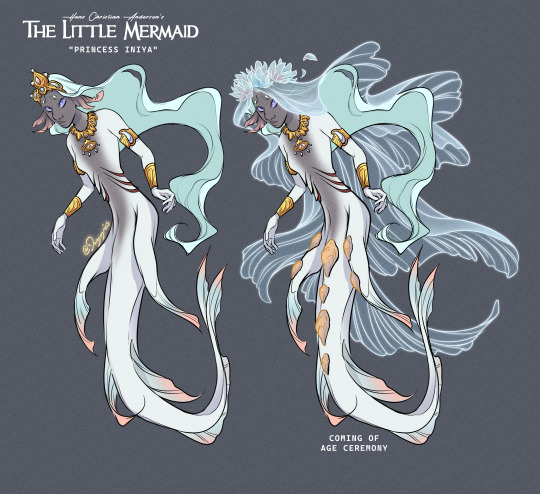
FAIRY TALE ART SERIES | Hans Christian Andersen's 'The Little Mermaid' | PART I
I previously uploaded this design for my interpretation of Hans Christian Andersen's Little Mermaid, but added a new look for her, based on the original story, complete with a wreath of lilies and oysters from her grandmother, and her veil as well.
I plan to draw designs for the other characters in the story as well!
--
Check out more of my work on other platforms!
My Instagram -- My Twitter
#the little mermaid#hans christian andersen#fairy tale#fairy tales#fairy tale art#artwork#drawing#character design#little mermaid#mermaid art#mermaid#mermaids#merfolk#mermaid artwork#folktale#fairytale#lit#literature#art#illustration#fantasy#fairytale art#mermay#mermay 2024#mermay challenge#mermay day 6
690 notes
·
View notes
Text
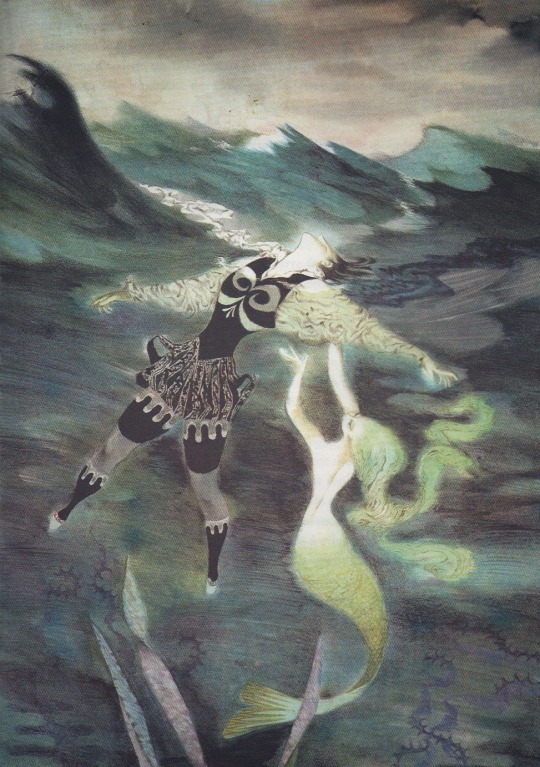
Légendes et contes d’Andersen
Éditions Gründ
1962
Artist : Jiri Trnka
The Little Mermaid
#jiri trnka#hans andersen#andersen#hans christian andersen#children's literature#children's illustration#fairy tale#children's books#vintage illustration#fairy story#children's book#fairy tales#old illustration#fairy#fairy stories#mermaid#sirène#the little mermaid#la petite sirène#prince#sea#ocean#waves#tempest tempête#mer#vagues
2K notes
·
View notes
Text
there is a huge difference between “magic” as in, “the fairy-tale symbol for a another dimension of good or evil being manifested/a fantasy word for ‘superpower’”
and “magic” as in: “real-world sorcery.”
HUGE difference. Sorcery happens in the real world. It’s when creatures worship created things instead of their Creator. It’s when humans get played by real demons and think they’re tapping into something better.
But “magic” in stories is not always that. Weirdly it sometimes references sorcery. But it’s not always sorcererous. The Fairy Godmother from Cinderella is a symbol; she’s a rewarder of good ethics, and her “magic” just makes that agency a little richer and sparklier. But the witch from Snow White? She’s a character who references real-world sorcery. The same way the Huntsman references real-world people-who-hunted-for-a-living.
That is the difference. Sorcery vs. storytelling magic.
#Sorcery#magic#people flip this for no reason all the time#it’s why Christians grumbled at Harry Potter#but they’re fine with Lord of the Rings#fiction#fantasy#storytelling#writing#concepts#literature#fairy tales
151 notes
·
View notes
Text
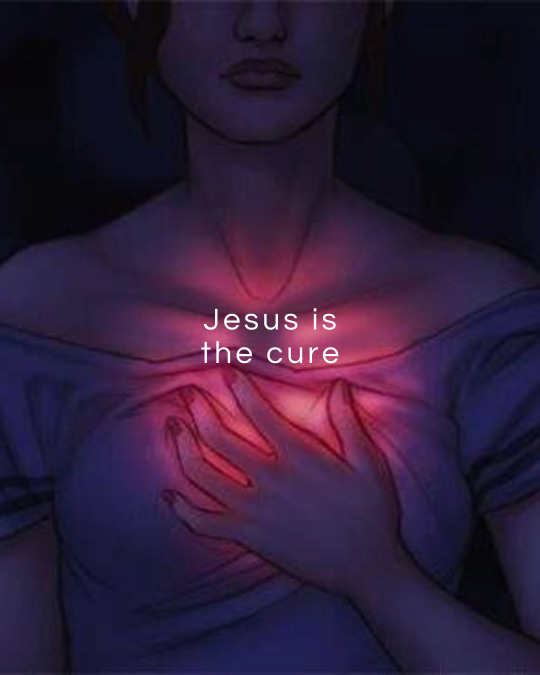
Esta imagem representa como meu coração esteve muitas e muitas vezes, mas encontrei um ugar que não doi mais. Já esteve assim?
#christian blog#literature#jesus#jesus is coming#faith in jesus#jesus christ#bible#jesus loves you#god#christianity#lord#salvation#christ#christian community#christian quotes#christian living
314 notes
·
View notes